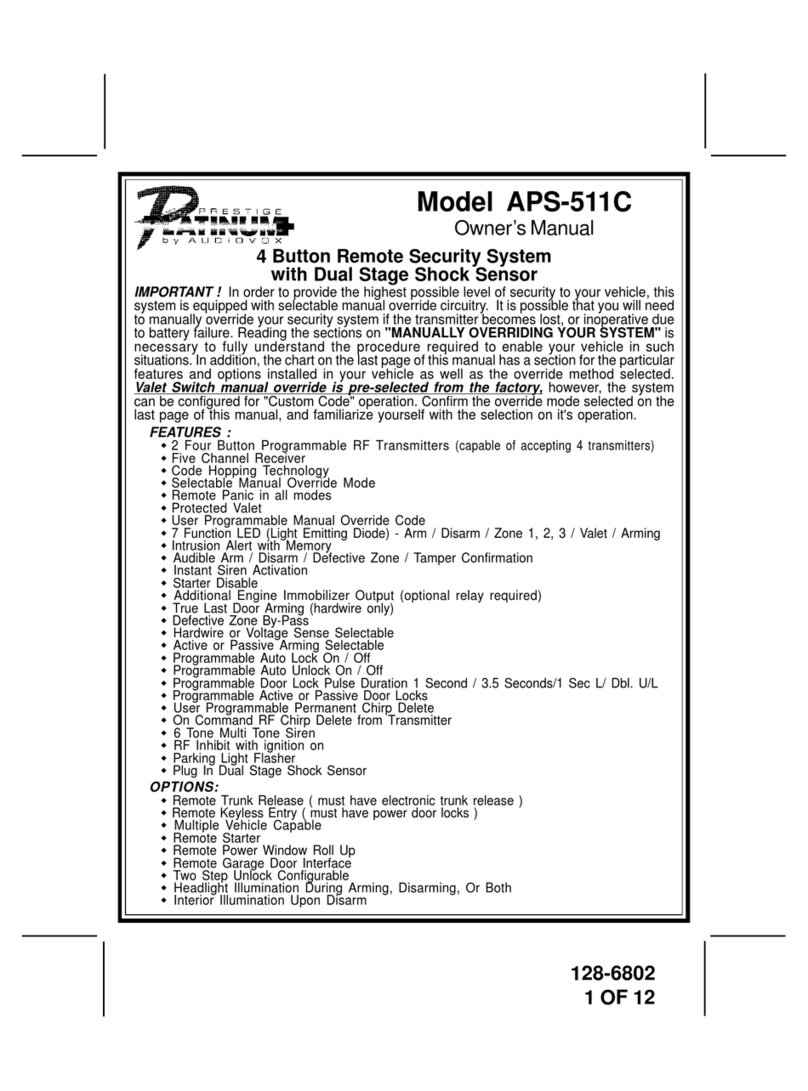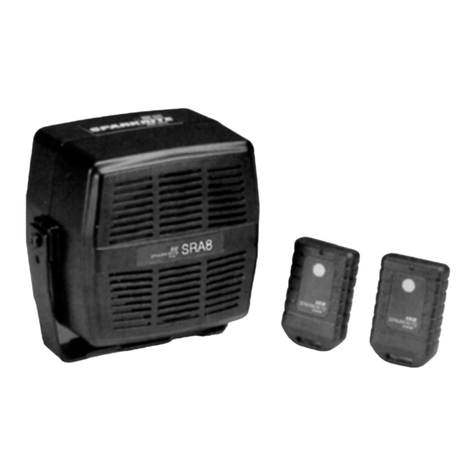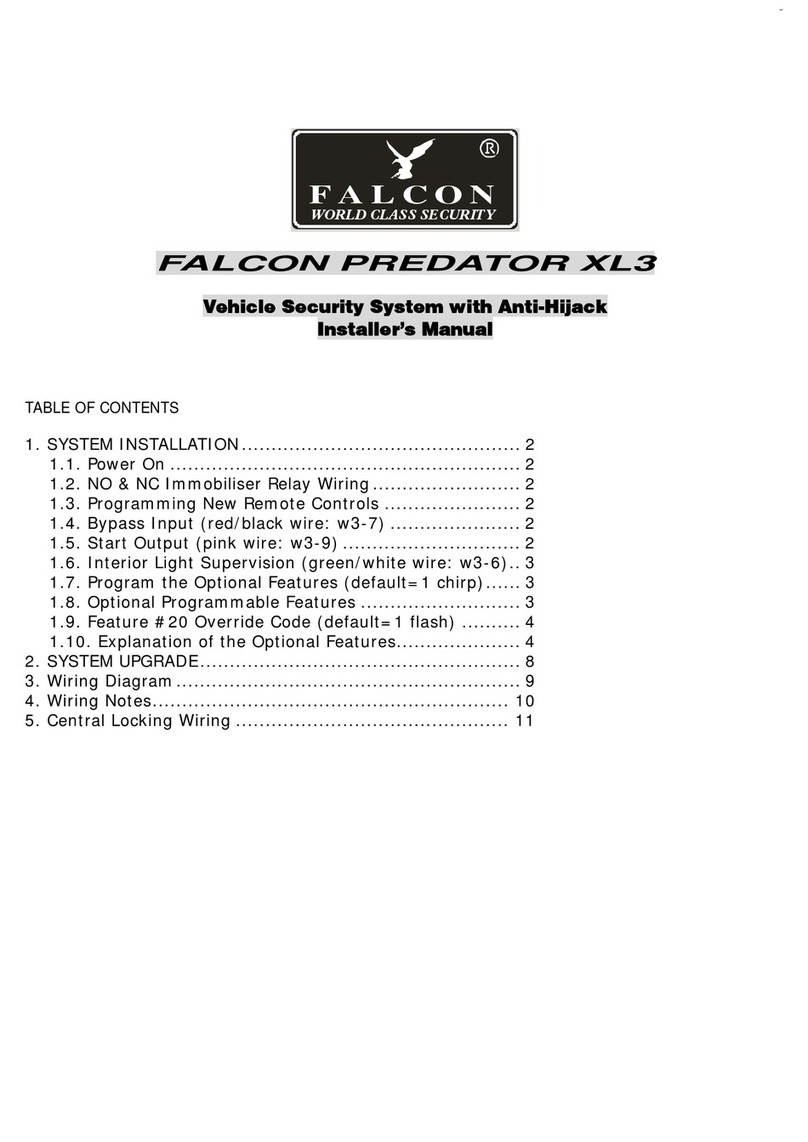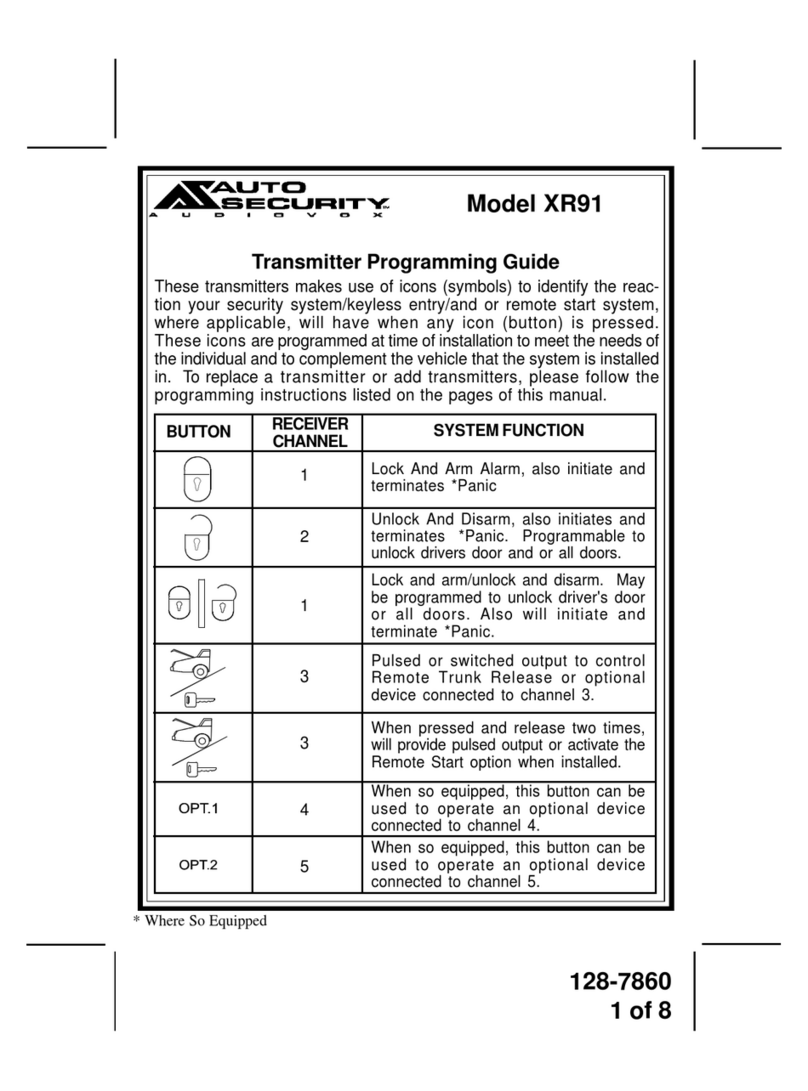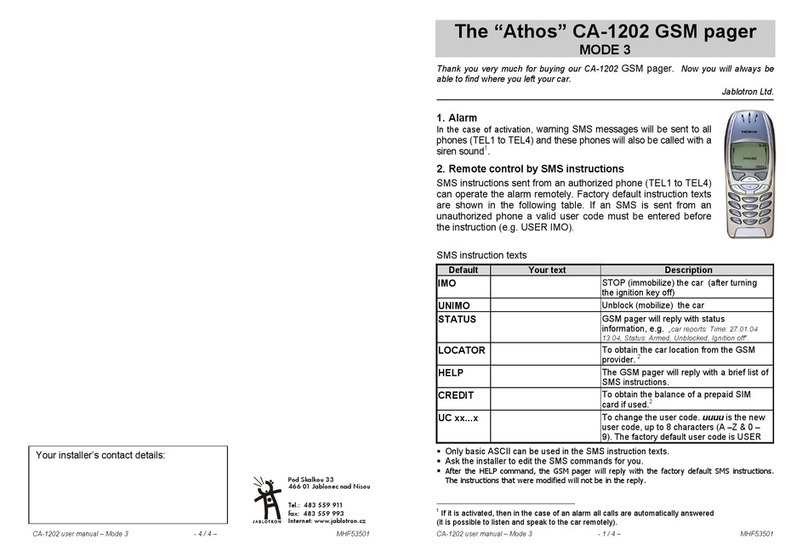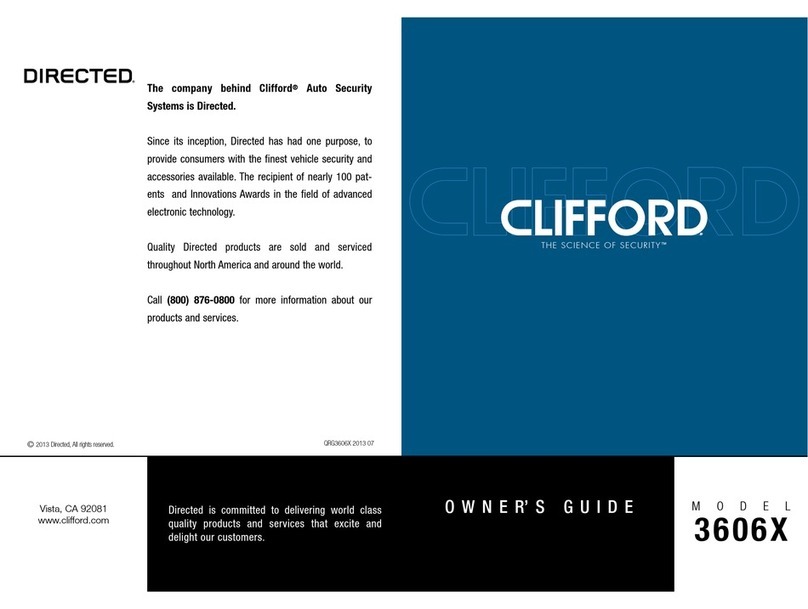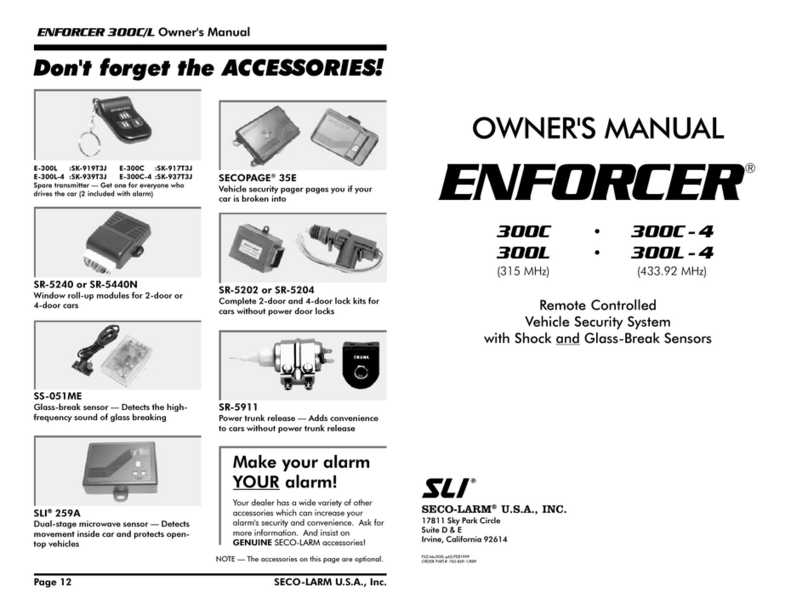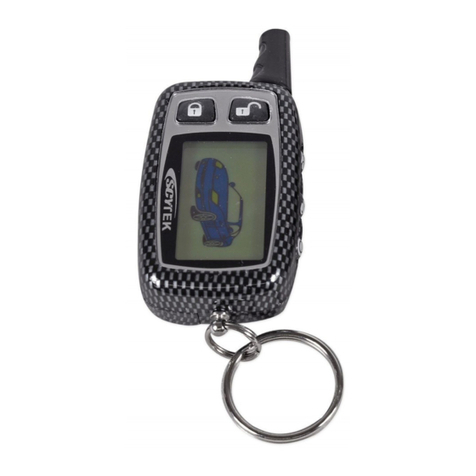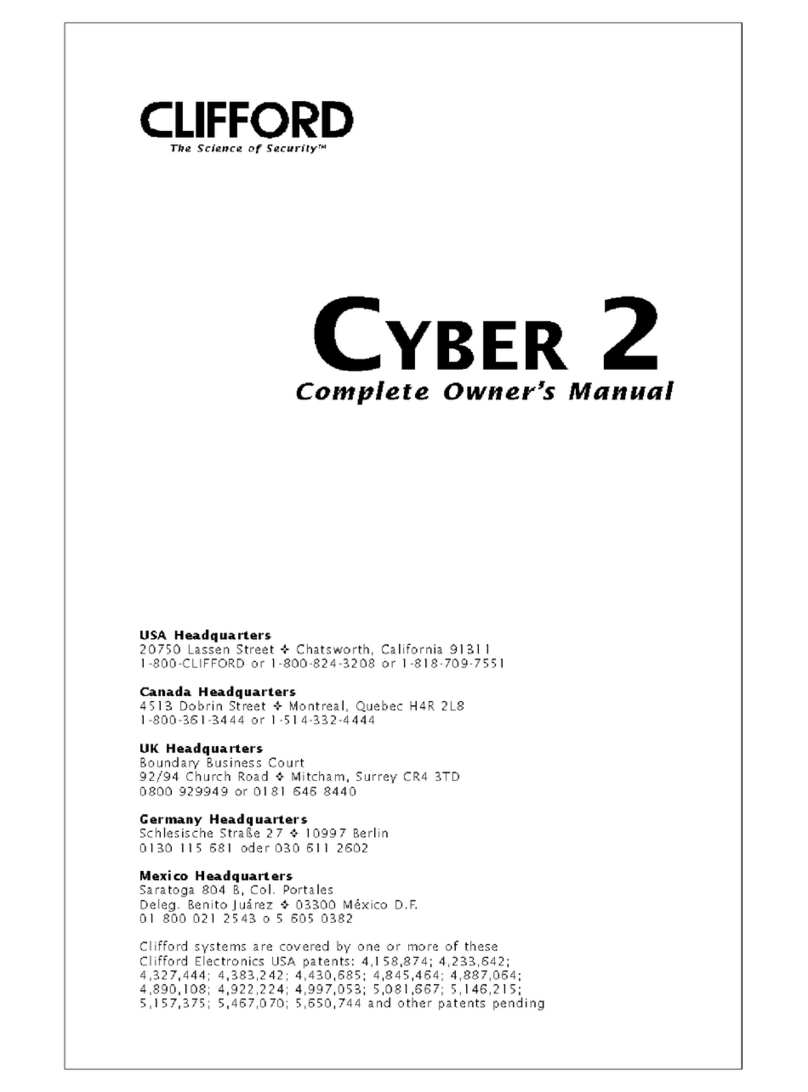Boot release output (150mA max):
Press the button for three seconds. The system will disarm, the doors will unlock (if central locking
connected) and the boot output wire will give a negative output for one second. For safety reasons the boot
release will not work with the ignition on. The boot release can also be programmed to operate instantly when
the button is pushed (refer Register 1, Feature 6).
The boot release button is also used to control the on-board turbo timer function (refer Turbo timer set-up). If
the on-board turbo timer feature is used, remote boot release is not available.
Auto zone bypass:
Auto bypass is designed to reduce false alarms caused by faulty switches or external sensors. If the alarm is
triggered three times by the same sector then that sector will be bypassed. (i.e. the sector will become inactive.)
The sector will only be bypassed for one arming period. The next time the system is armed the sector that was
bypassed will become active again.
Door/bonnet/boot/AUX inputs:
The door, bonnet, boot and AUX input wires detect a change of state rather than just a negative input. This
means for example, if you arm the alarm with the door open the alarm will trigger if the door closes.
Turbo timer functions:
The system has two turbo timer functions:
•On-board turbo timer: allows the vehicle to run for 1, 2 or 4 minutes after the ignition is switched to
off.
•Interface: will interface with an external turbo timer to allow the vehicle to run on the turbo timer after
the alarm is armed.
Refer to Turbo Timer Instructions for full details.
Operate system from car’s factory remote (MAP function):
The system will arm when the factory remote is locked and disarm when unlocked. It requires the factory
upgrade wires to be connected.
Refer to the Factory Remote Interface (MAP function) section for full details.
Courier feature:
The alarm can be armed with the ignition on. The alarm allows the vehicle to run indefinitely with the ignition
on after the alarm is armed. If the alarm is triggered it will shut down the engine and sound the alarm.
Refer to Courier Mode for full details.
Automatic re-arm and re-lock
This feature prevents the accidental disarming of the system. It will re-arm and (if central locking is connected)
re-lock the doors if the system is disarmed from an armed state and a door is not opened within 60 seconds.
This feature is off by default but it is recommended that it be programmed on (refer Register 2, Feature 4).

